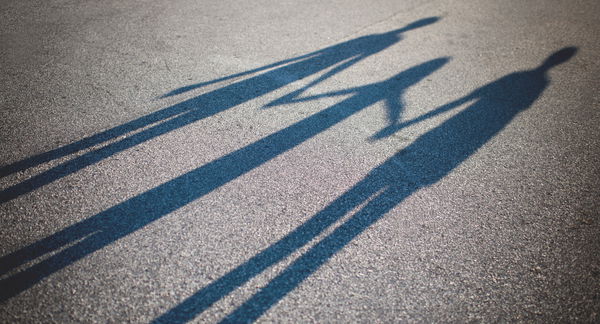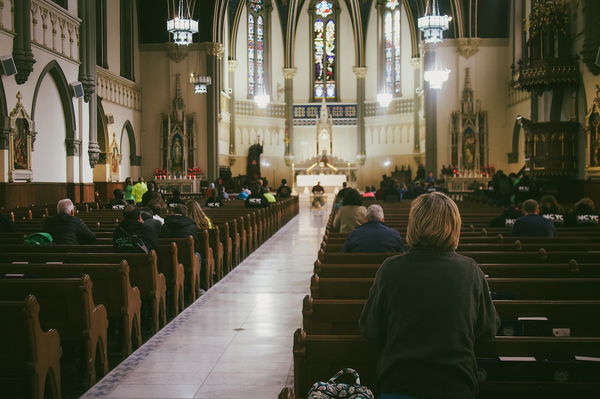Highlights
- We don’t know what we’re missing if we label a life not worth living and shirk the work of seeing the gifts within. Post This
- Far from isolation on another planet, parenting a child on the spectrum can take us deeper into truths about what it means to be human, particularly human limitation and its corollary, interdependence. Post This
Half a year ago, I had very little familiarity with autism, nor had I ever heard the word “neurodiversity,” coined in the 1990s by sociologist Judy Singer in reference to the idea that neurological differences (like autism spectrum disorder or ADHD) are not deficits but differences that have corresponding strengths. (A person with ADHD, for example, may struggle with time management but may also be brilliantly creative.) Recently, my 5-year-old son was diagnosed as autistic, and now my media consumption clusters around these words.
Among the books that I am finding most formative are Steve Silberman’s masterful history of autism research, Neurotribes: The Legacy of Autism and the Future of Neurodiversity; Barry Prizant’s Uniquely Human; and Daniel Bowman Jr’s beautifully written memoir, On the Spectrum: Autism, Faith, and the Gifts of Neurodiversity. As I read, I am tracing a common thread: the idea that rather than being pathological, being autistic is simply a different way of being human.
One of the more sobering realizations—the kind that makes me excruciatingly grateful—is that if my son had been born a little over half a century ago, expert advice would have been to send him to an institution and me to a psychotherapist. As Silberman describes in Neurotribes, in the 1960s (and beyond),
Clinicians had little to offer beyond the standard advice to institutionalize the child and quietly remove their pictures from the family album. Parents determined to raise their sons and daughters at home, like Clara Claiborne Park (mother of Jessy Park) and Eustacia Cutler (mother of Temple Grandin) were condemned for endangering their welfare by trapping them in a psychically toxic environment.
This is because a common theory among midcentury psychiatrists was that autism was caused by parenting style, particularly emotionally distant parents who expected too much of their kids. In popular culture, “refrigerator mothers” bore the brunt of the blame. Parentectomy, as it was called in the press, was the protocol.
Of course, institutionalization was no panacea. Leo Kanner, the famous child psychiatrist who was the first to systematically define autism, later found that among his original cohort of patients, it was those who were notinstitutionalized who fared best. Bright, articulate children with precocious skills and impressive memories—but who were institutionalized for their odd mannerisms and speech, for example—became shells of themselves, withdrawn and at times violent in the atrocious conditions of state mental hospitals. As Silberman reports, Kanner concluded that institutionalization was “tantamount to a life sentence.” Patients who received individual care that allowed them to develop their intense interests rather than discouraging such eccentricities, often achieved remarkable things in life.
Thanks to the work of disability rights advocates, today my experiences as a mother to a delightfully quirky son on the spectrum are far from the horror of that era—one example of how society is more humane today (I daresay even more Christian) than it was a century ago.
When friends and family members share observations about my son, they have done so not out of judgment or even alarm or concern, but in gentle and reassuring ways that emphasize resources and support. And instead of looking at me with suspicion, our pediatrician’s first words after our evaluation were something like, “I know this might not make sense to you right now, but autism itself is not a bad thing. It comes with strengths.” He reassured me that we would take an approach that leaned into my son’s strengths. My general impression of the conversation was that our doctor, while being clear-eyed about the very real social, emotional, and adaptive challenges that can interfere with daily life, definitely had a sense of reverence for my child. Rather than burdened, I felt entrusted.
We don’t know what we’re missing if we label a life not worth living and shirk the work of seeing the gifts within. I’d argue that often it’s not even that the gifts are so hidden, as it is that our eyesight is too dim, and we are in need of new lenses. For strength is inseparable from weakness; the very traits that make us supremely capable in one arena are the very traits that make us subpar in another. A strength of mine is that I am reflective; a weakness is that I have a terrible time deciding anything. This relationship between possibility and limitation is true of us all but perhaps more evident in those with cognitive differences. It is like looking at one of those optical illusions—do you see an old man, or a young lady? Both are there, held within the contours of the same geometric pattern, the outlines of one giving shape to the other.
In Silberman’s book, Shannon Rosa, a mother of an autistic son Leo, tells the story of how reading “Planet Autism,”the first article she read after getting her son’s diagnosis left her feeling physically ill. In that 2003 piece, Salon writer Scot Sea lets out a torrent of words describing what it’s like raising his autistic teenage daughter and admitting that he understands why a father shot his adult autistic son and then himself. The crassness of the piece shocked me when I read it; it is like a time capsule of how attitudes about autism have changed in the past two decades. It’s also a piece that underscores how crucial support is, for both children and parents. Sea concludes,
For parents, the raising of children with severe disabilities confirms the indifference of nature, the disorder of the universe. Any potential, any ambition they once may have entertained for themselves has forever been compromised. Together with their remarkable, impossible children they make a life on a different planet. Where the gravity is very strong. And the climate rarely changes.
Certainly, there is no use romanticizing some of the difficult aspects of parenting high-support kids; the sacrifices are real. But instead of “Planet Autism,” I am grateful to have publications like Plough Quarterly, with a providentially-timed recent issue, Made Perfect: Ability and Disability. Featuring pieces like “The Art of Disability Parenting,” the magazine conveys a more hopeful vision that is graced by the ability to reframe suffering rather than avoid it.
“Of course it’s hard,” one mother of a disabled son says. “But it’s hard in a different way than people might expect. And it’s much more wonderful than they can imagine. I’m sorry for people who are scared of suffering. I don’t think they will end up knowing how to live.”
This past week, I reached out to Brandy, a neighbor whose daughter is autistic and nonverbal, asking if she’d be willing to talk to me about the resources she has found most helpful. I came away with a long list of county resources, school scholarships, and online groups to check out, but what I keep thinking about is Brandy’s buoyant mindset and real sense of hope.
“We have bad days, and good days,” she told me. “But it’s life. You have a bad day. But like any other time. You get up, move on. Next day will be better.” She has a strong sense of her daughter’s capabilities (“Just because she’s disabled doesn’t mean she’s not able”) and describes her cheerleading of small victories (a word here and there).
Brandy spent much of our conversation describing the hard things—the meltdowns, the biting, the inability to communicate, the climbing, and the constant messes. But she also shared the “little bits of hope that I get when I see her doing something new.” She found a short story written by an autistic adult who was nonverbal as a child and began talking later in life to be particularly meaningful, because it helped her to see that autistic children do show love, albeit not in “the conventional way.”
“But they show us in their own way,” Brandy emphasized.
The flapping hands, the giggling—that’s them showing us their care and love…. I had never thought of that before; maybe she is trying to talk with us in her little ways and we’re just not picking it up. I sit there and I remind myself. You know what? What if God is doing something in her? I don’t want to interrupt that. I don’t want to mess with that.
Far from isolation on another planet, parenting a child on the spectrum can take us deeper into truths about what it means to be human, particularly human limitation and its corollary, interdependence. That is, after all, the thrust of the neurodiversity model: remaking the world so that autistic people have a place on this planet.
Amber Lapp is a Research Fellow at the Institute for Family Studies and co-investigator of the Love and Marriage in Middle America Project, a qualitative research inquiry into how white, working-class young adults form families and think about marriage.















